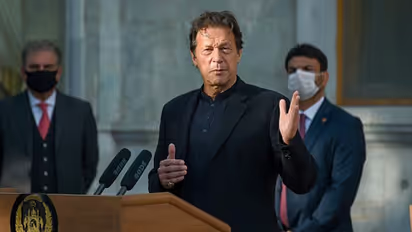Pakistan currency drops to new low under Imran Khan govt; depreciates 30.5% against US dollar

Synopsis
According to reports, it is said that monetary tightening and currency rate depreciation resulted in more significant inflation, public debt, and debt payments.
Under Pakistan Prime Minister Imran Khan's current administration, the Pakistani rupee has depreciated by 30.5 per cent versus the US dollar in the last three years and four months. According to The News International, the value of the Pakistani rupee has decreased from Rs 123 against the US dollar in August 2018 to Rs 177 against the US dollar in December 2021, a 30.5 per cent decline over the previous 40 months. This is one of the most significant currency depreciation in the country's history.
Notably, the only other more considerable depreciation happened following the fall of Dhaka, when Pakistan's currency was depreciated by 58% against the USD in 1971-72, from Rs 4.60 to Rs 11.10.
Former economic adviser, Dr Ashfaque Hassan Khan, stated that economic policymaking had completely broken down because the country's fiscal policy had become submissive to monetary and exchange rate policies. According to reports, it is said that monetary tightening and currency rate depreciation resulted in more significant inflation, public debt, and debt payments. In the instance of Pakistan, empirical data indicated that a 1% monetary tightening increased inflationary pressures by 1.3%.
Many independent economists contend that the current currency depreciation was predetermined by the IMF through past measures and has nothing to do with macroeconomic fundamentals. Experts believe that the substantial currency depreciation under Imran Khan's administration increased inflationary pressures. According to the reports, they feel that the 30.5 per cent devaluation of the currency resulted in increased inflation.
Also Read | Pakistan's Embassy in Serbia trolls Imran Khan on Twitter
According to experts, the PTI government's massive rupee depreciation fuelled inflationary pressures, with two fundamental causes contributing to the price increase. First, food and commodity prices and gasoline costs surged on the worldwide market, and second, the 30.5 per cent devaluation of the currency also contributed to increased inflation.